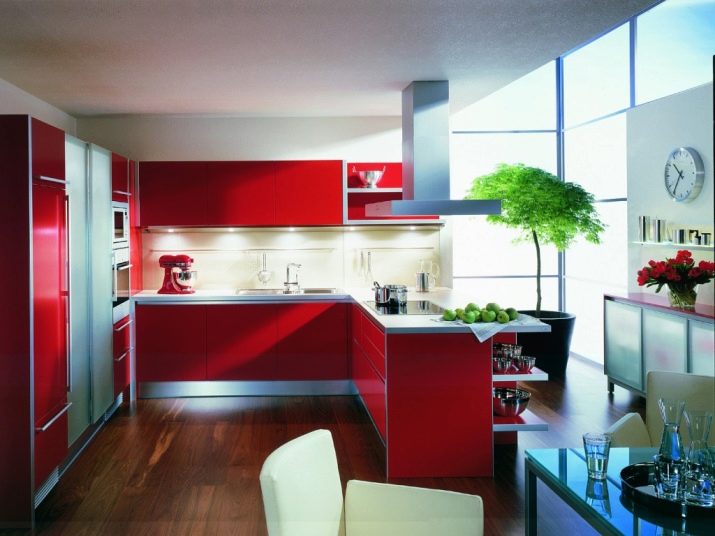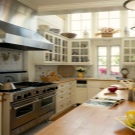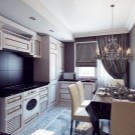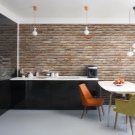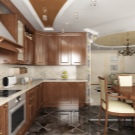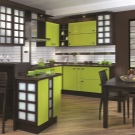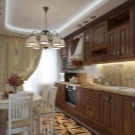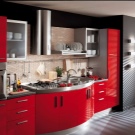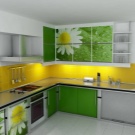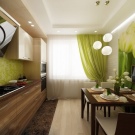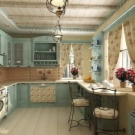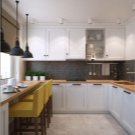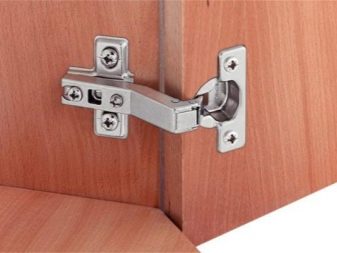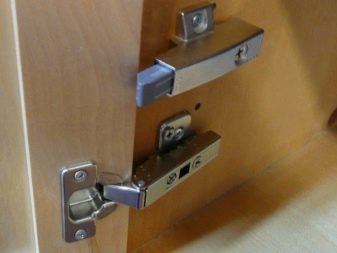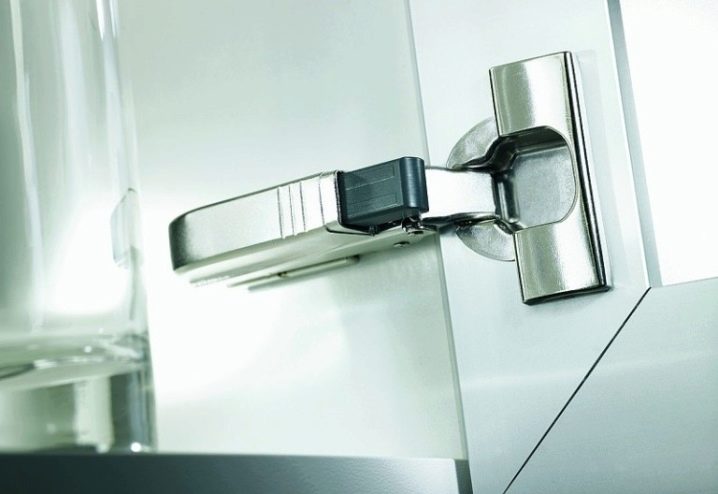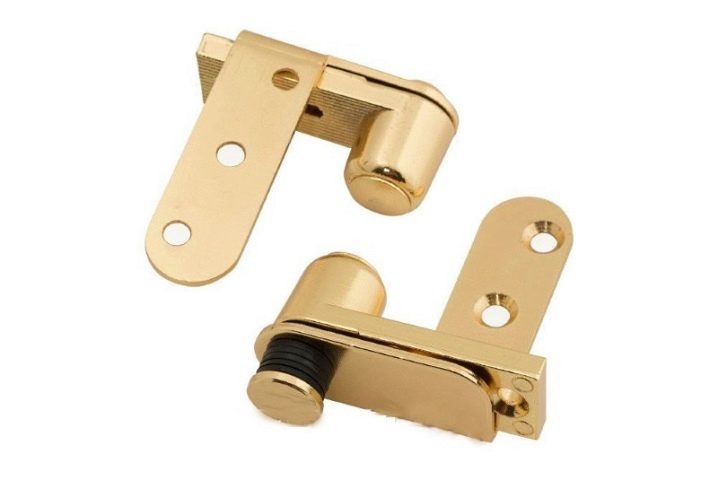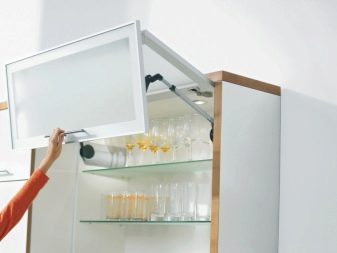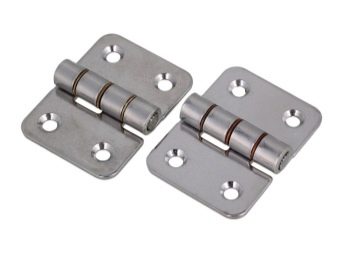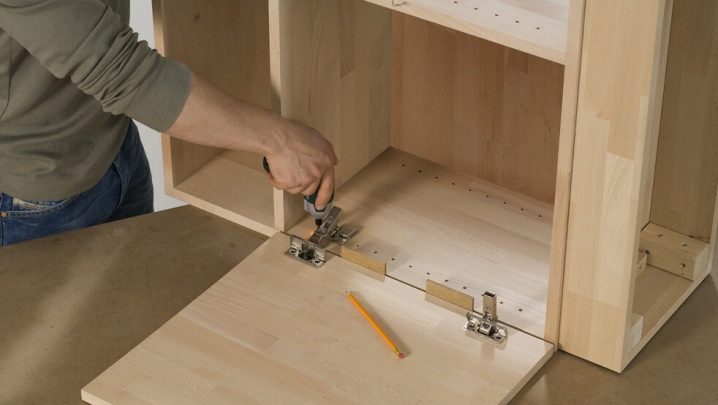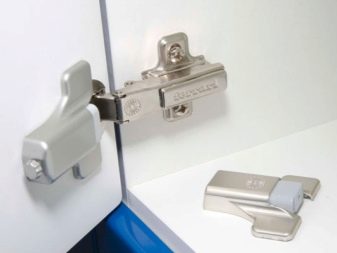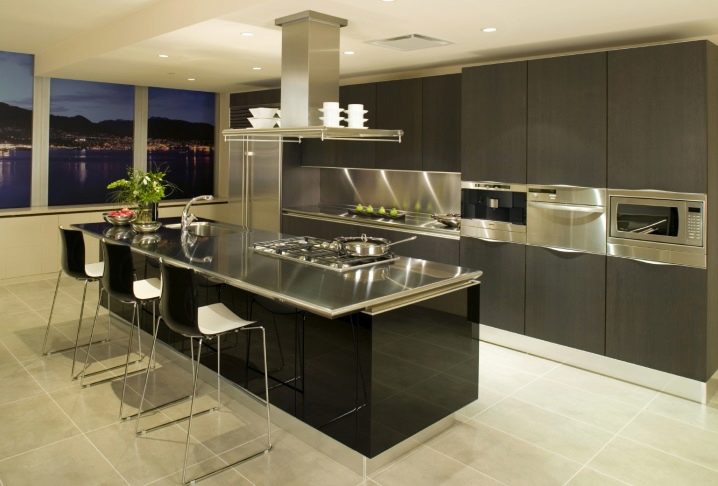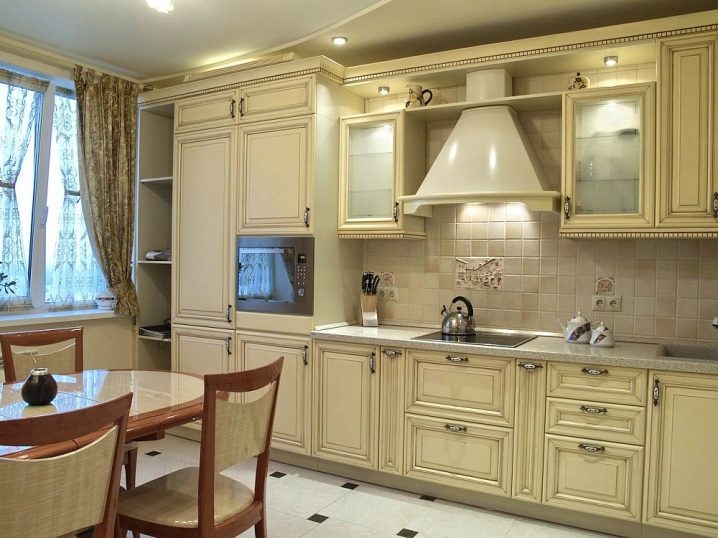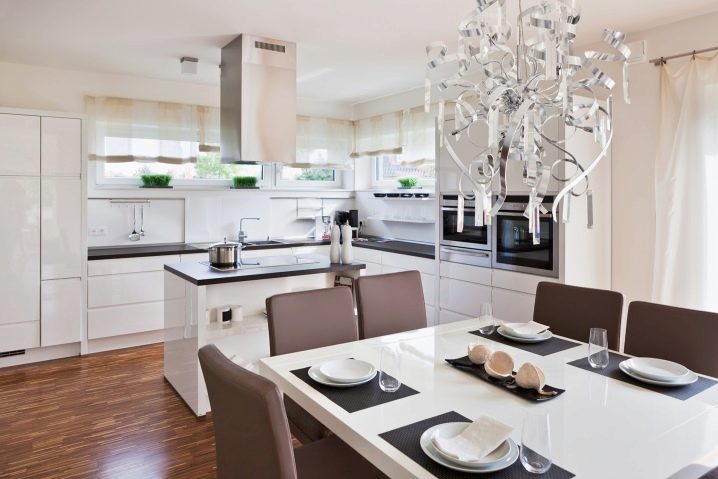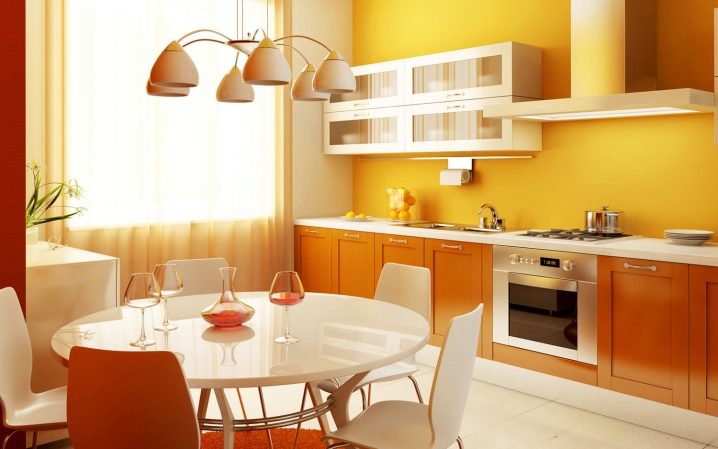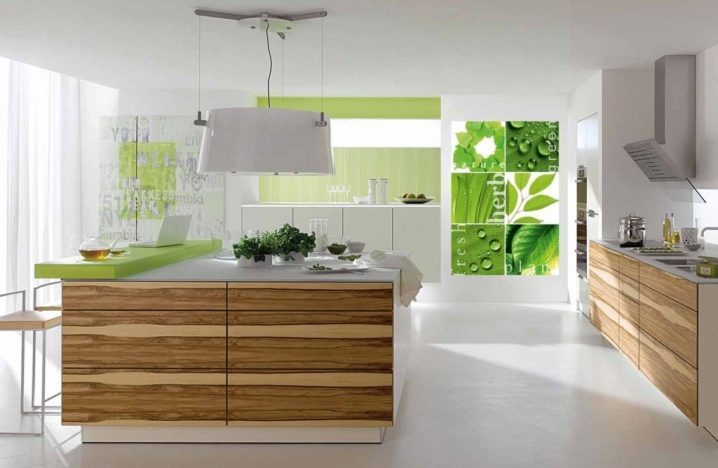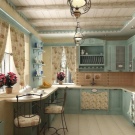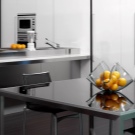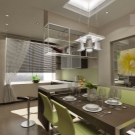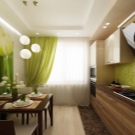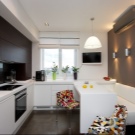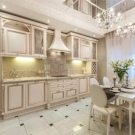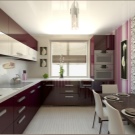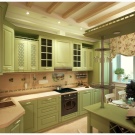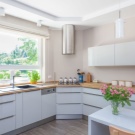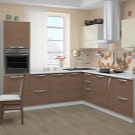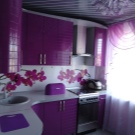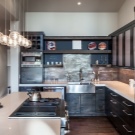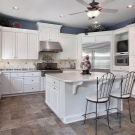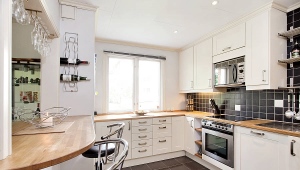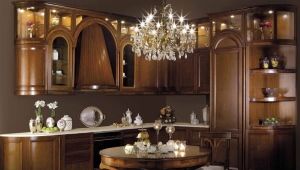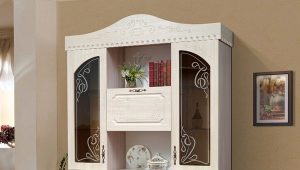Hinges for kitchen cabinets
The service life of any furniture always depends on the intensity of its operation and the quality of the selected fittings. Furniture cabinets are used by housewives quite often, so the choice of hinges for them is a very important occupation. It will be necessary to figure out which loops there are and on what the choice of one or another type depends.
Kinds
By way of fastening
- Slide-on. This is a classic method of fastening, in which the fasteners and the rest of the fittings needed in the assembly of kitchen cabinets are placed in the opening of the plate on which the fixation is made.
- Key-hole. In another embodiment, this type of binding sounds like a “keyhole”. At the same time in order to get the tip of the screwdriver to the screw head, it must be placed in a special hole in the loop.
- Clip-on. The method of fastening, in which, is provided for fixation on the mounting plate without the use of screws and equipment. Fastening occurs as a result of a click.
By way of closing
- The usual.
- With closer. This method assumes the presence of a damping device. It can be embedded in a furniture hinge or mounted independently.
By the size of the hinge bowl
The most widely used bowl sizes are 26 and 35mm. It all depends on the technological features of furniture production and on what kind of furniture must be equipped with loops for cabinets. In some cases, other sizes may be used. In certain types of loops cups may not be at all.
To destination
Main
- External (overhead). These are the most widely known for the assembly of furniture hinges. In the reduced state of the closed sashes, they hopelessly close the opening. One of the frequently used subtypes of such loops is transformers or inverse with an opening angle of up to 180 degrees.
- Semi-mounted (semi-laid). They are fastened in the places where adjacent doors converge and cover the end of the middle wall in half.
- Internal (supplementary). Such door hinges should be chosen when the door leaves are recessed relative to the facade line.
Additional
- Corner.As a rule, they are used for hanging hanging furniture (for corner cabinets). These hinges most often differ in the angles of plowing doors. Such an angle has not only a digital value, but also a certain form, to be sharp or blunt.
- Straight (adit). Hinged, if necessary, fixing the door on a non-moving base (false panel). As a rule, they are common in corner cabinets and baskets under sinks.
- Carousel. These kinds of loops are sometimes found under the names crocodile and crab. Their main purpose is to fasten moving parts of furniture.
For other constructive parts
- Framework.
- Installed without using a drill. Such hinges are useful if the door is not thick enough to install cup hinges. The negative side in the installation of this hardware is that the adjustment of the position of the doors is possible only in one plane (up-down or farther-closer).
- Spring. As a rule, they are chosen as a secondary option when the installation of other fittings is not possible.
- For glasses. The special design allows the hinges to be attached to the glass casement.As a rule, such loops are supplied with soft plastic details.
Mounting Mounts
On the wooden door
Wooden doors can close both wall and bottom cabinets. The basic algorithm of sequential actions when installing a loop for hanging is reduced to the following steps:
- Determining the position of the hinges on the door. To do this, an indent of about 80-150mm is taken from each edge of the door. The distance depends on the height of the door panel;
Markup is done at selected locations. To do this, the loop is applied to the canvas and with a pencil is used to make a rough outline of the proposed position of the loop. For installation, it is better to use a special template that allows you to quickly and accurately apply the markup;
- Then, with the help of a milling machine and the selected nozzle, the space for the cup is drilled. For drilling recommended to choose a tool with excellent sharpening. It is important to monitor the position of the cutter and the depth of the niche. The standard bowl depth for furniture hinges is 12-13mm.
- The loop is inserted into a niche and horizontally aligned. The mechanism is fixed in this position and places for fasteners are marked;
- Drilling holes for fasteners, so that it can be embedded in the cabinet;
- The device is attached to the door;
- Marking is carried out to attach the mounting plates on the cabinet body. To do this, the door is installed in the required location and level, getting rid of repainting and shifts. On the case of the cabinet plan a place for mounting strips.
- Drill the marked holes;
- Install the reciprocal bar;
- Connect both sides of the loop.
On the glass doors
Glass doors are preferably hung on the top row cabinet. Glass, as a more fragile material, requires a special approach to the installation of hinges. The hardware contains a certain list of required elements:
- mounting plate attached to the sidewall;
- mounting bracket;
- sealing ring, which is necessary for fixing fittings and glass doors;
- cap or decorative overlay, which is almost always installed in order to hide the visible parts of the hardware from the front side.
There is a certain method of mounting fasteners on a glass door:
- In order to properly install or replace the loop, you need to select the area of marking. The marking of the glass door is similar to the wooden one;
- Using a drill, the hinge is attached to the wooden frame of the cabinet. For this purpose, holes are drilled for mounting, and the loop is fixed with a screwdriver or a screwdriver;
- The hinge is attached to the glass casement using clips. The glass sheet is placed in the loop. On both sides between the glass and the hinge are placed rubber gaskets that protect the glass from damage. Produced by fixing the loop with bolts.
Loop adjustment
With a horizontal discrepancy
Doors should be installed as follows: on the side of the installed fastener, a gap or visible distance should be formed, and when opening the door, the other side should go beyond the borders of the cabinet wall. In case the cabinet is a two-door, then they must cling to each other.
The process of regulation itself is the carrying out of certain manipulations of the adjusting screw, which is present on the furniture hinges. It is located in the shoulder of the hinge, which is located closest to the door.If this screw is screwed in harder, the distance between the end of the door and the sidewall will increase. By doing the opposite, we make less distance between them.
Door depth
In the process of using the kitchen cupboard, the hostess often notices that the door in the closed form goes beyond the borders of the cupboard or is heated deep into it. To adjust this defect, you will have to find the adjustment screw on the hinge shoulder again, because it takes part not only in the regulation, but also in fixing the door. And when it is twisted, it becomes possible to move the door back and forth with respect to the walls. To adjust the door, you need to install it in the optimal position, and then tighten the adjusting screw all the way.

